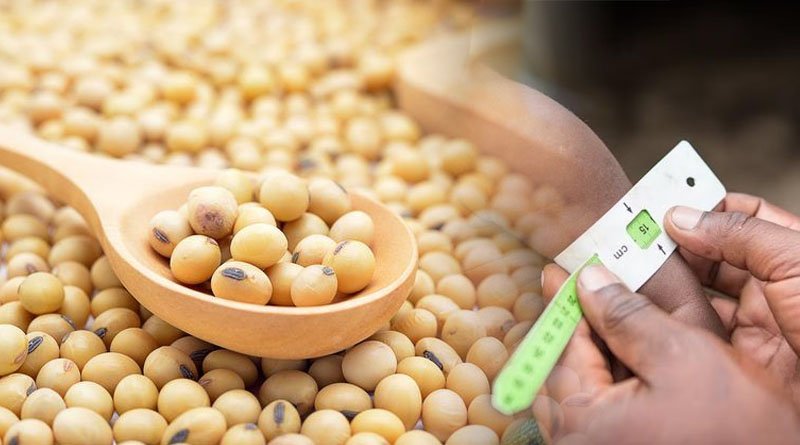There are a total of 20 amino acids, 11 of which are non-essential and 9 of which are essential to our bodies and must be obtained through our diet.

As human beings, we are very conscious of our health. We need some kind of minerals, vitamins, proteins, carbohydrates, and lipids. To fulfil that need, we consume fruits, meat, fish, and eggs. If we already get all kinds of amino acids and nutrients from all these previously explained things, then why do we need food like soybeans?
Nutrition in soybeans:
Proteins:
Protein is mainly made up of amino acids. There are a total of 20 amino acids, 11 of which are non-essential and 9 of which are essential to our bodies and must be obtained through our diet. Soybean contains all these nine essential amino acids.
Fiber:
Soybeans are high in fiber, which helps regulate digestion and maintain healthy cholesterol levels.
Vitamins:
Soybeans are good sources of several vitamins, including folate, vitamin K, and vitamin C.
Minerals:
Soybeans are a good source of essential minerals, including iron, calcium, magnesium, and potassium.
Healthy fats:
Soybeans contain both polyunsaturated and monounsaturated fats, which can help reduce the risk of heart disease and lower cholesterol levels.
The macronutrient contents of the soybeans can vary depending on the variety, processing, and preparation method. However, in general, here are the approximate macronutrient contents of cooked soybeans per 100 grams:
• Carbohydrates: 9 grams
• Protein: 13 grams
• Fat: 6 grams
It is important to note that soybeans also contain a small amount of sugar and fiber. Fiber contents can vary depending on the soybean type and how it’s prepared. They are also low glycemic index foods, which means they have a slow and steady effect on blood sugar levels.
How soybeans will replace expensive food in the world:
As we all know, in recent years, because of all the crises like floods, droughts, and climatic changes, the economic condition of Pakistan has not remained so good, and as a result, the cost of everything is increasing day by day.
In Pakistan, most of the population belongs to the middle class, and they cannot afford things like meat, eggs, fish, and all fruits.
The price of an egg in Pakistan is 30 rupees, so it is not possible for every person to consume one egg daily, and this egg provides us with almost 12–13% of protein. Let’s talk about the prices of meat, beef, and chicken. The price of meat in Pakistan is 2000 rupees per kilo, the price of beef in Pakistan is 750 rupees per kilo; the price of fish in Pakistan is 450 rupees per kilo; and the price of chicken is 550 rupees per kilo.
A normal person cannot afford these things in enough amounts to fulfil their body’s needs. All these meats provide us with protein. The protein percentage in meat or beef is almost 26%, the protein composition of chicken breast is 31%, and the protein content of salmon is 22%.
But the protein content in soybeans is 40%, which is more than all these things. Now, if we look at fruits, we know that they mainly provide us with carbohydrates. For apples that are highly recommended by doctors to eat at least one apple a day to keep themselves healthy.
The price of apples in Pakistan is 300 rupees per kg, which may be affordable for the middle-class population of Pakistan but not for the lower-class population of Pakistan. The carbohydrate composition of soybean is 35%, which is also more than many of our fruits.
There are nine essential amino acids in humans that he will have to uptake through his diet. Out of these 9 essential amino acids, 8 are present in soybeans, so there is no need to move to any other crop to fully fill our amino acid needs.
So the question that arises is whether soybeans food is also affordable for normal people in Pakistan or not. The price of soybeans in Pakistan is 300 rupees per kilo, which is affordable as compared to other things. .
Can we grow soybeans for food at home for our consumption?
Yes, it is possible. We can grow soybean indoors for our consumption. Soybean is a warm-season crop and grows best in full sun and well-drained soil. Plant your soybean in spring when all the danger of frost has passed because frost can affect your crop.
At first, you will have to take a pot, which must have a hole for proper drainage. Sow the soybean seeds properly in the pot by maintaining the proper distance. Place the pot in a location with bright and indirect light, and we should maintain a temperature of 60-85 degrees Fahrenheit. We should have to provide fertilizers in a balanced amount and also have to provide the proper amount of water to plants.
How to grow soybeans outdoors
At first, we should have to select a proper site with well-drained soil. Then sow the seed in soil with a row to row distance of 20–36 inches and a plant-to-plant distance of 2-4 inches, and sow the seed at a depth of 1-2 inches.
Then we should have to provide balanced fertilisers 3–4 times per week. Apply proper insecticides and pesticides to save your crop from insect pests and diseases.
This article is jointly authored by Adeena Shakoor, Dr. Humera Razzaq, and Mam Sana-e-Mustufa from the Department of Plant Breeding and Genetics at the University of Agriculture Faisalabad.